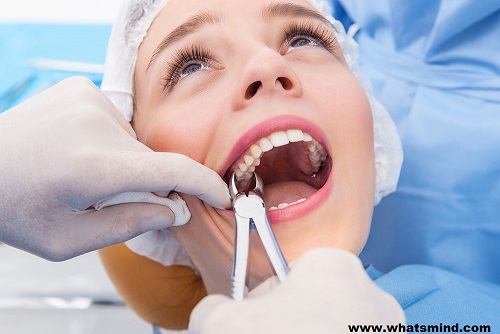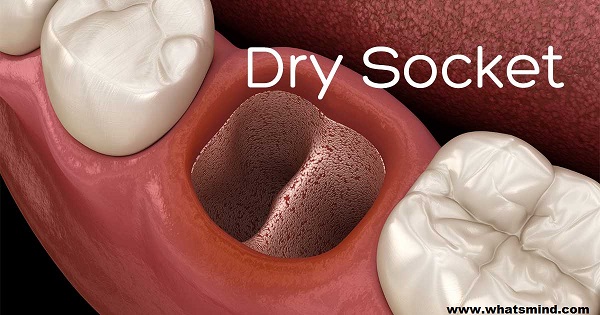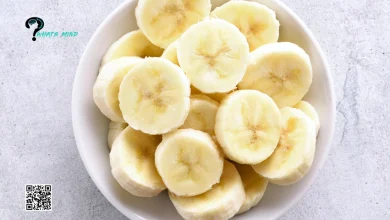When can I stop worrying about dry socket?

When can I stop worrying about dry socket is a moot topic for today. If you are facing problems and pain with the dry socket then this article is especially for you. The extraction of a tooth is often the most traumatic event in one’s lifetime. You’re at risk for developing a dry socket, which can happen even after it has been weeks since your procedure. In many cases this might take 7 to 10 days until you are fully healed and able to eat normally again- but not always!
As germane with when can I stop worrying about dry socket? If you’ve ever had a tooth extraction, then chances are high that it’s happened to you once or twice. A dry socket can be caused by an accidentally removed blood clot in the space left behind after your procedure and sadly happens more often than we would like – but don’t let this deter you from future visits if possible!
The dreaded dry socket is when blood clots form improperly following treatment for impacted wisdom teeth. While incredibly rare compared to regular cavities, they happen about 10% of the time during oral surgery procedures which involve local anesthesia and sedation as well as those done under general anesthesia with IV sedatives given through needles inserted into veins near the elbow; these include dental extractions (especially upper molars) because of their roots.

When it comes to pain after a tooth extraction, the worst is over once all drainage from around your healing site has stopped. You’ll know you’re on the mend when there’s no more risk of dry socket and you can have something other than water or soda while waiting for a full recovery.
Also read: How to get thicker hair?
Table of Contents
What does “dry mouth” mean?
Recapitulating about when can I stop worrying about dry socket? It means that saliva production decreases because patients are unable to produce enough during this time due to how their surgery went.
Maybe they had nerve damage in an area where nerves control salivary glands during their procedure, or perhaps dental work done elsewhere made them lose some sensation which ultimately affects chewing habits as well as swallowing fluids too soon before eating solid foods at mealtime.
Tips to recovery and less risk dry socket:
Dental extractions can be uncomfortable and painful, so it is important to take care of yourself. You want your recovery from dry socket ASAP! Keep the following tips in mind: Follow your body’s signals for how much activity you should do on a given day; plan ahead by taking off work or school when necessary; gradually resume normal activities like showering after one week (or sooner if pain decreases); remember that swelling peaks around 72 hours post-op but starts diminishing shortly thereafter while bleeding will decrease steadily over the first few days.
If at any point during these processes, sudden onset of pain interrupts what you’re doing–stop whatever you were doing immediately until further notice because this could indicate a dry socket.
Also read: Becky Tilley
How to recognize dry socket?

Now that your tooth is gone, you may have noticed an uncomfortable soreness in the corner of your mouth. This condition can be called a dry socket and it’s when there isn’t a blood clot protecting what used to be inside your empty cavity.
While discussing on when can I stop worrying about dry socket? Without this protection, raw tissue becomes exposed and over-the-counter pain relievers are no longer enough to help with the pain – surgery might need to happen or at least more medication will become required for treatment from now on!
Major symptoms of dry socket:
As we are discussing on When can I stop worrying about dry socket? A dry socket occurs when a blood clot that forms around the tooth after it has been pulled doesn’t form properly. This can cause extreme pain, excessive bleeding, and there may be visible bone in your mouth or bad taste/smell if infection sets in.
A dry socket is a really common complication for the removal of teeth. The pain from dry socket cannot be controlled by over-the-counter medications and can sometimes extend across your face, causing you to have difficulty eating or sleeping because it’s so painful.
If left untreated, there will not be any blood clot present in your tooth extraction site which could lead to an infection with bad breath/taste as well as pus coming out of where the root section was extracted leading doctors to amble time diagnosing whether it’s just dried saliva or something more serious like oral cancer!
The first day after surgery is the worst. You’re bound to be sore and swollen, but you may also notice small amounts of blood around your gauze dressing or an increase in pain if these symptoms persist – see a dentist right away!
How can you intercept dry socket?
In the article, “When can I stop worrying about dry socket?” it is recommended that you cover your extraction site with gauze for at least 30 minutes after surgery. This helps form a blood clot and can help prevent dry sockets from occurring.
If you smoke or if there’s any chance of smoking in the near future, ask your dentist about getting oxidized cellulose dressing instead as they may be more effective than regular dressings due to their ability to break down into absorbent material when exposed to air over time which will keep moisture-free pockets away from infection sites within bones while healing.
It’s important to be gentle with your mouth for the first few days after having an extraction, but don’t worry! There are a plethora of things you can do to intercept that will make it pretty easier.
Avoid hard foods and try eating soft ones instead – this includes pieces of bread, cereals, chicken soup, or anything else smooth enough not to hurt when passing through swollen tissue. You should also chew on the opposite side from where you had your tooth removed if at all possible so as not to aggravate any remaining teeth there in case they need work done soon too.
Though it may feel like something is wrong because nothing seems out of place right away even though healing has begun internally behind closed lips; remember: caution beats perfection every time (pun intended).
Precautions after 24hours of surgery:
The next about When can I stop worrying about dry socket? Avoid smoking, eating crunchy foods that can get stuck in the socket after surgery. Drink only hot or cold drinks and avoid alcohol for 24 hours to keep blood clots intact if you have a tooth extraction procedure done at your dentist.
If you are on oral contraceptives ask about discontinuing use as studies show these medications may increase your chance of developing dry sockets when undergoing dental treatment such as extractions.
When to seek a dentist?

If you’re feeling pain in your mouth after surgery, call a dentist right away. The best way to avoid dry socket is by paying close attention to the instructions for taking care of it post-surgery. If something feels off or changes suddenly with regards to any side effects like fever, nausea, vomiting, or increased pain then it’s time to reach out!
Dentist offices usually have an answering service even when they are closed so if you can’t get through during office hours there should be someone on duty who will take your message and contact them as soon as possible.
After 5 days should I stop worrying about dry socket?
Can you be confident that your healing will go smoothly and without complications if it has been five days since your tooth extraction? Absolutely not. The risk of developing the most common complication while recovering from a dental surgery is present for all 10 to 12 weeks, with some individuals taking longer than others on average.
The converging statement about When can I stop worrying about dry socket? Make sure to stay in close communication with both yourself and your care team during this time period so they can help identify warning signs or potential issues as soon as possible before they become severe problems later down the line!
What’s the longest a dry socket can last?
A long time ago, it was believed that only people of African descent were at risk for developing this condition. However, years later scientists discovered that Caucasians and Asians are also susceptible to having a dry socket after tooth extraction.
As far as the point is concerned about When can I stop worrying about dry socket? A recent study found numbers as high as 81% in those populations! This is because there simply isn’t enough blood flow available during surgery which leads to an infection or severe inflammation called periapical periodontitis (PAP).
When can I stop taking offense about my dry socket?
Dry sockets usually start around the second day after a tooth was pulled. As time goes on, it becomes more painful and eventually starts to radiate into your ear or head region. Other symptoms include bad breath, odor in the mouth as well as an unpleasant taste which changes with each person’s own palate preference – for example some people may have salty saliva while others might notice their saliva is sweet-tasting like molasses!
How soon will I know if I have a dry socket?
Usually, after 2 days of pulling the tooth, the pain starts. And by the passage of time, it can be more severe and can affect the ears.
Other symptoms of dry socket include bad breath, an unpleasant smell in your mouth, as well as a taste that is unbearable for most people – some even describe their mouths feeling like they are full of cotton balls or shards from when you cut yourself with broken glass!
How bad does dry socket hurt?
While exploring When can I stop worrying about dry socket? It can be excruciatingly painful and may have exposed bone or tissue, an unpleasant smell. By comparison to the typical healing time of a tooth extraction which is less painful over time with no other symptoms, it’s not usually serious but still very uncomfortable.
How do I fix a dry socket fast?
To get rid of your pain and infection, go to the dentist as soon as possible. You can also use medicated dressings that are packed with medications so you don’t have any dry sockets for long.
What are the cautions for dry sockets?
Folding up the topic when can I stop worrying about dry socket? A dry socket is the result of an infected tooth extraction, which can be prevented by taking a course of antibiotics following surgery. Symptoms include pain that radiates from the site to your ear or head (the same side), bad breath or foul odor coming from your mouth, and visible bone in the extracted tissue.
You’re not going to find a lot of information online about using antibiotics for dry sockets. It’s important we get the facts straight, and there are two main ones: Antibiotics have no effect on preventing or curing dry socket; and if you’ve had previous cases of it in your mouth (especially more than one), take these steps to make sure that this time around things will go smoother.
Does Dry Socket Need Antibiotics?
Last about when can I stop worrying about dry socket? Dry sockets usually form when an extraction site is left open after tooth removal because blood clots stop forming over any exposed part – however, contrary to what many people think without research into antibiotic use and its effects on the teeth healing process, they don’t heal faster with them either!
For more information, contact us at Gmail




